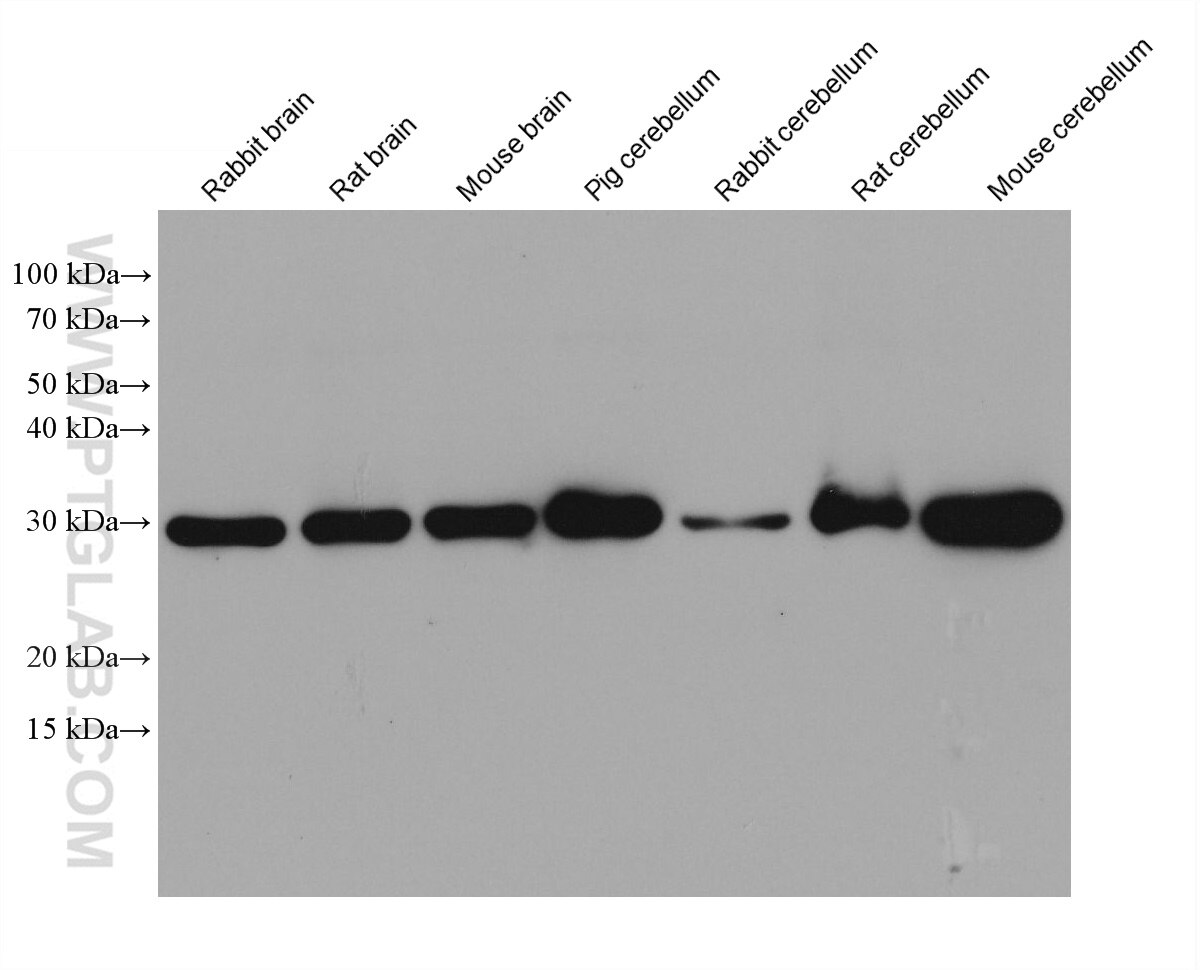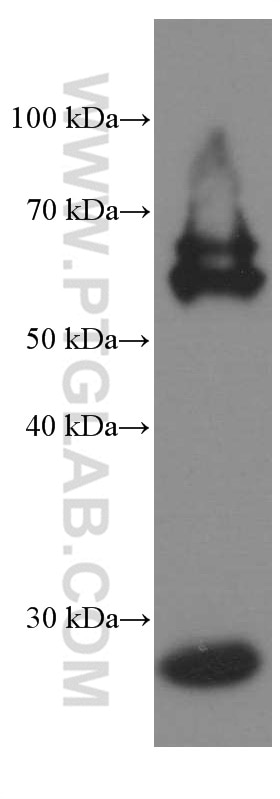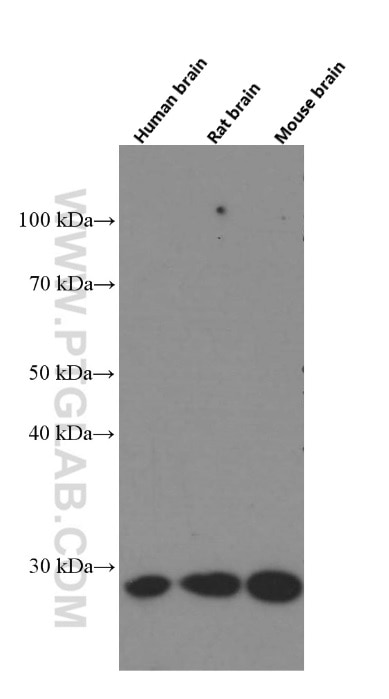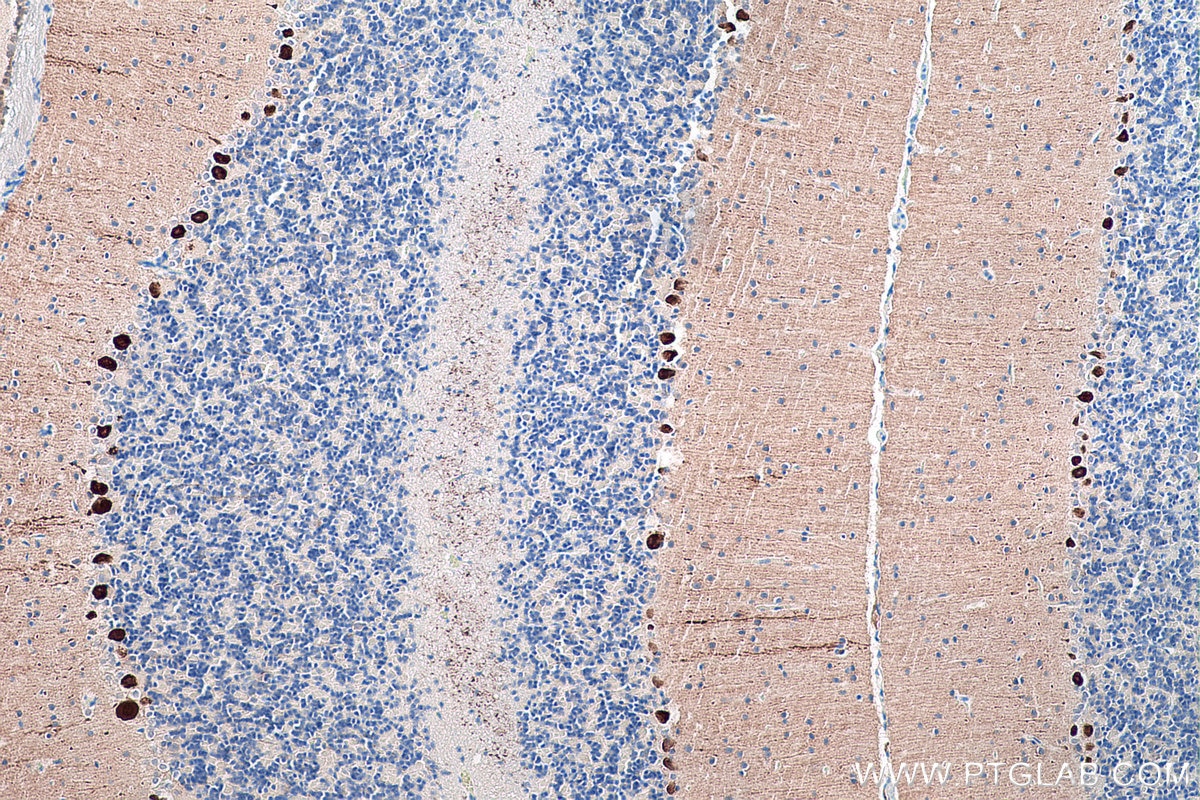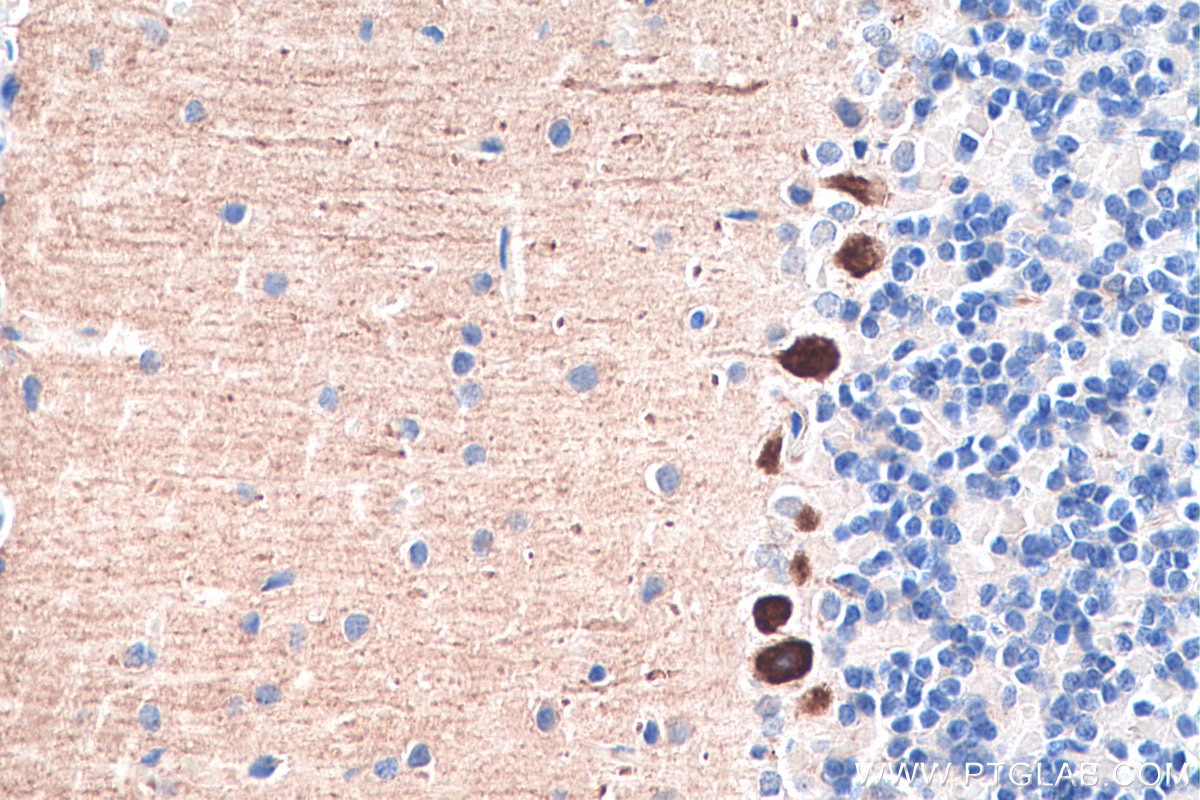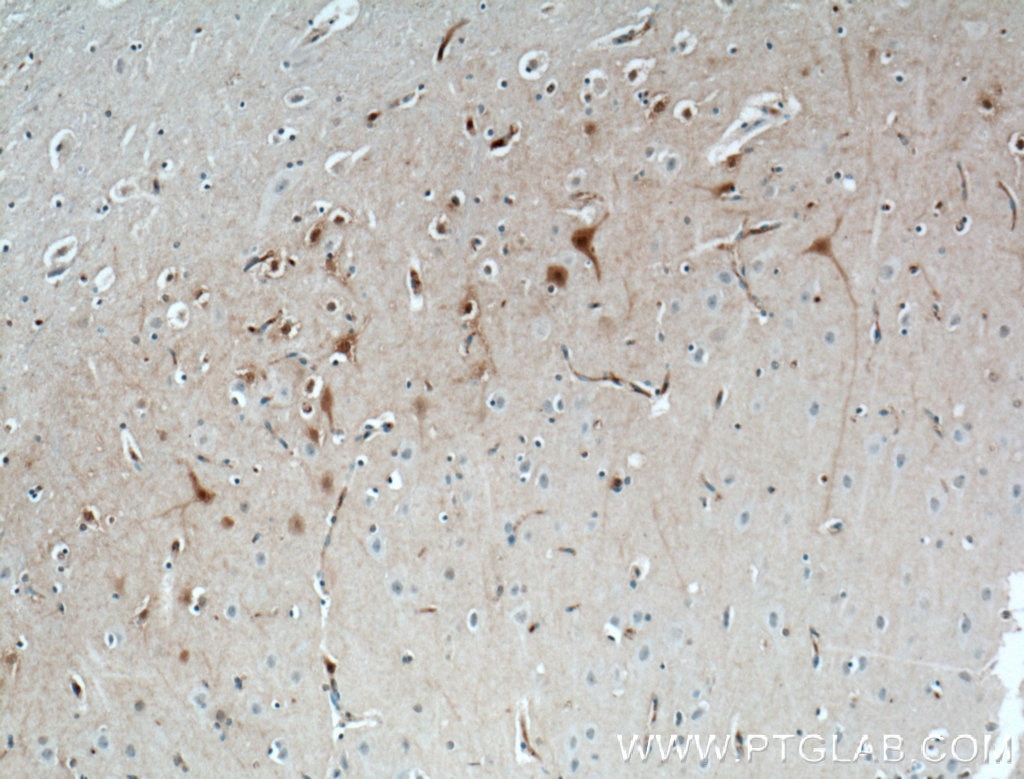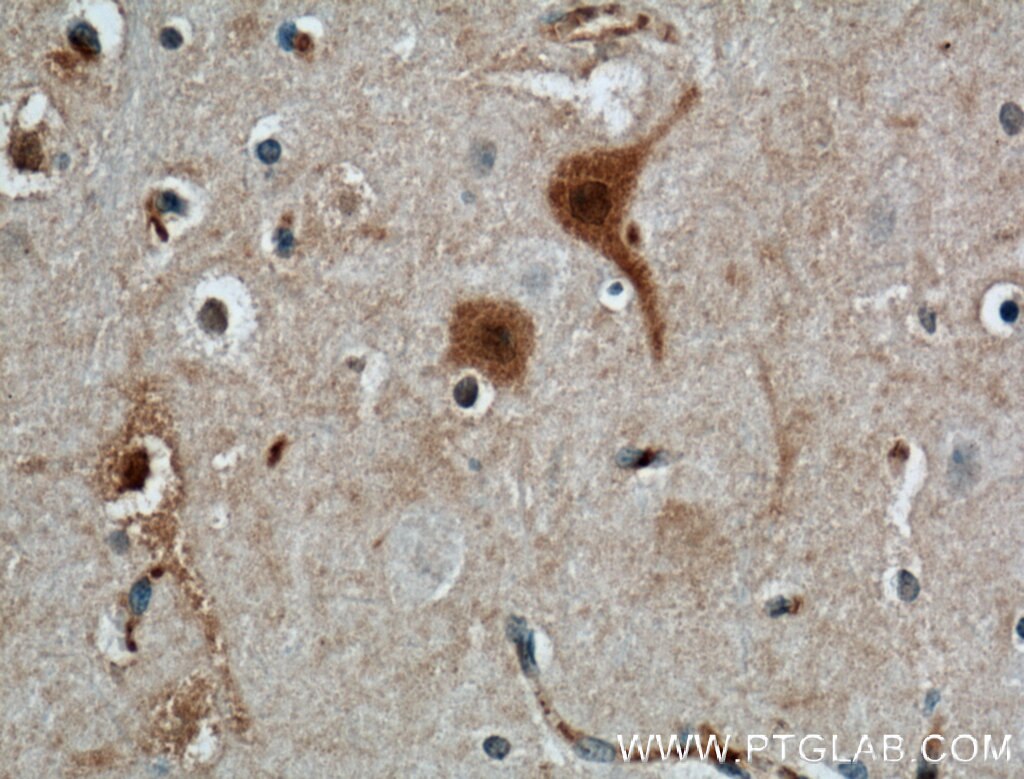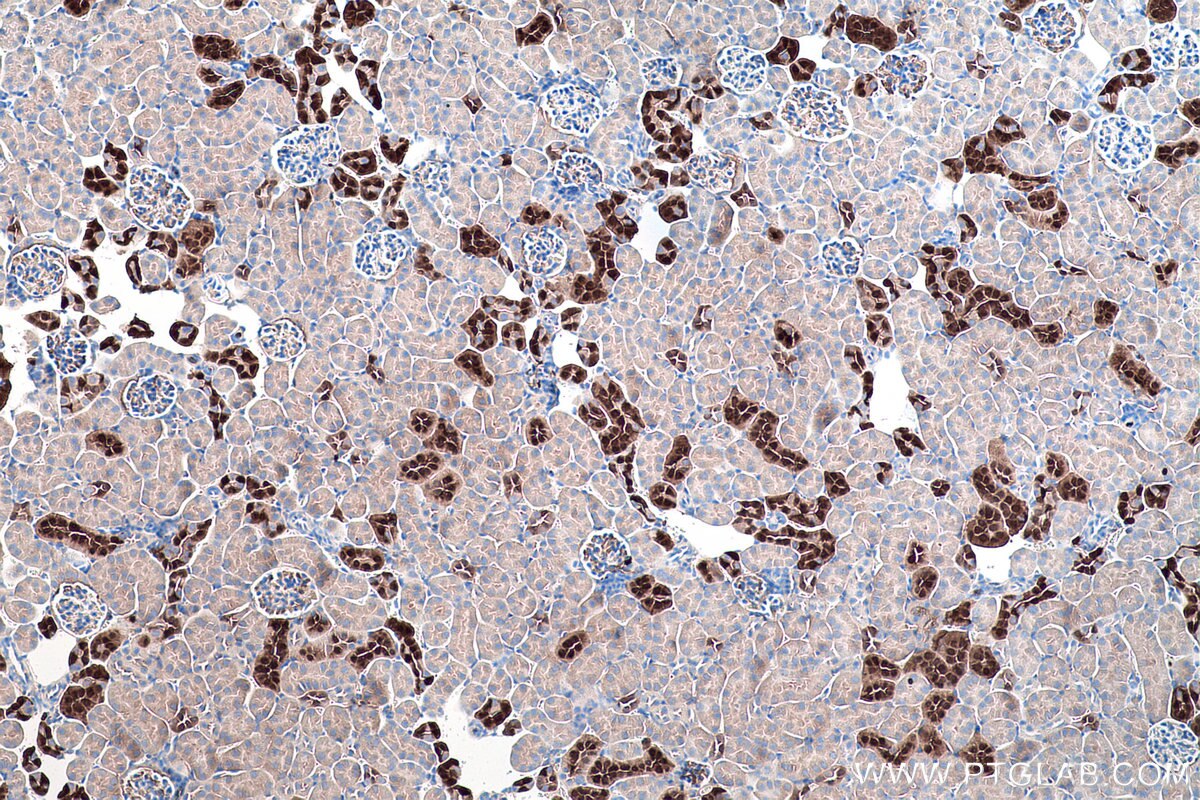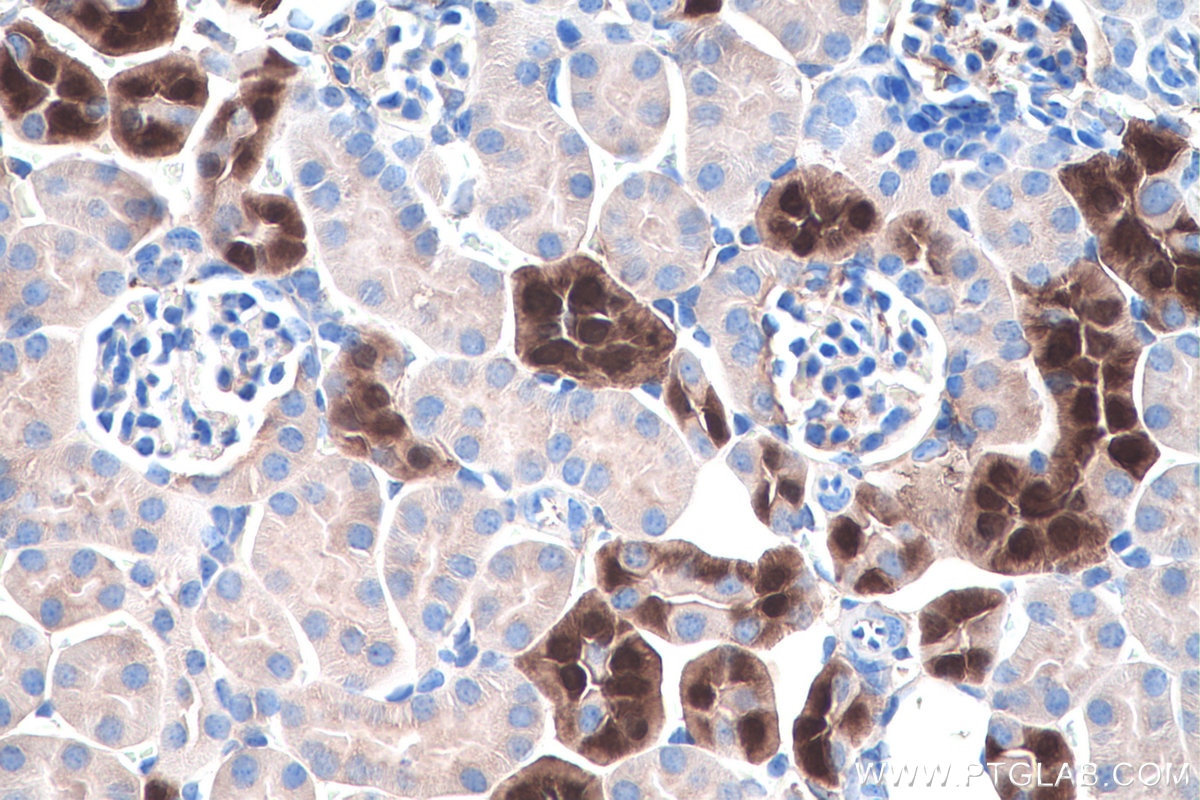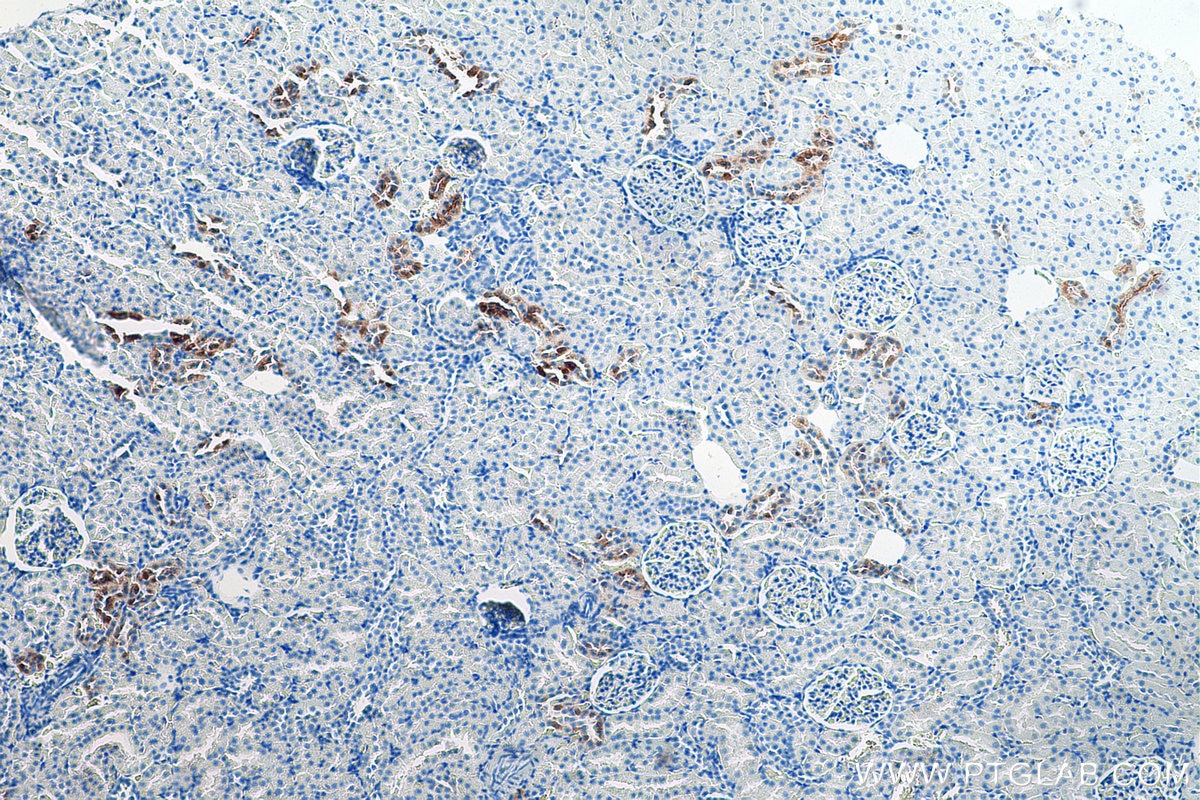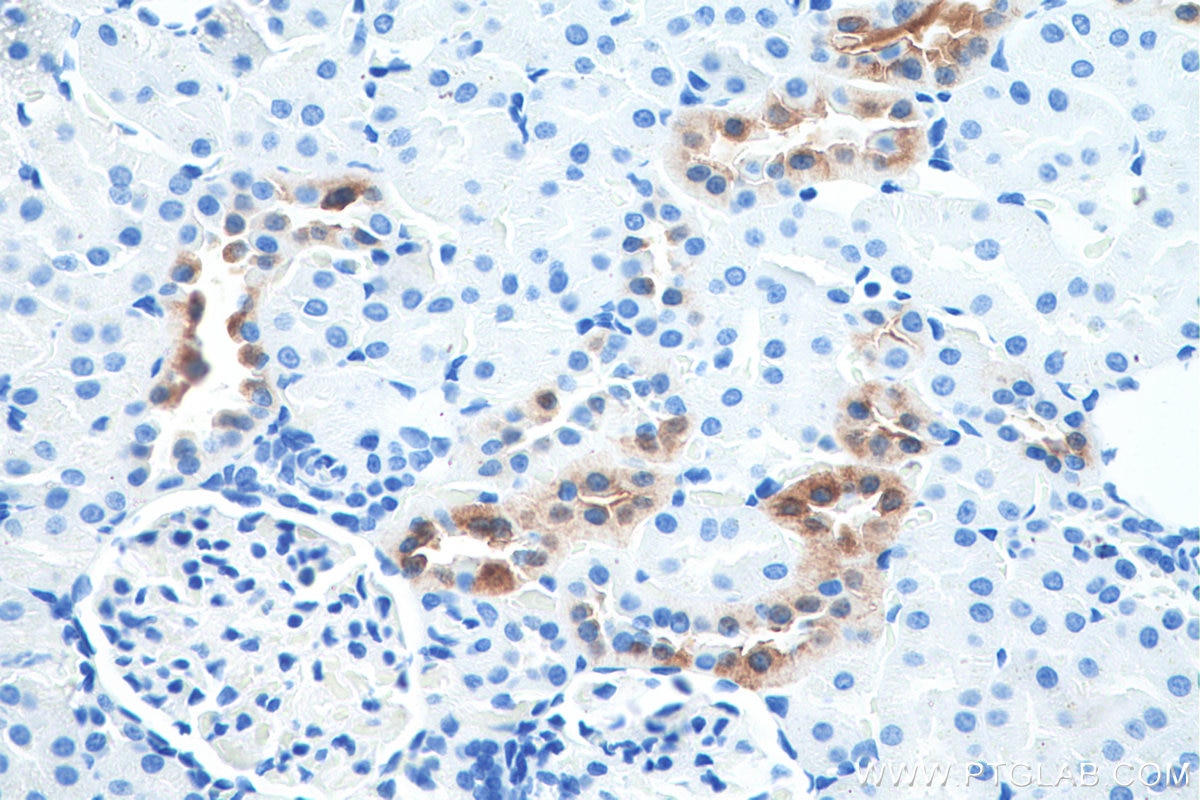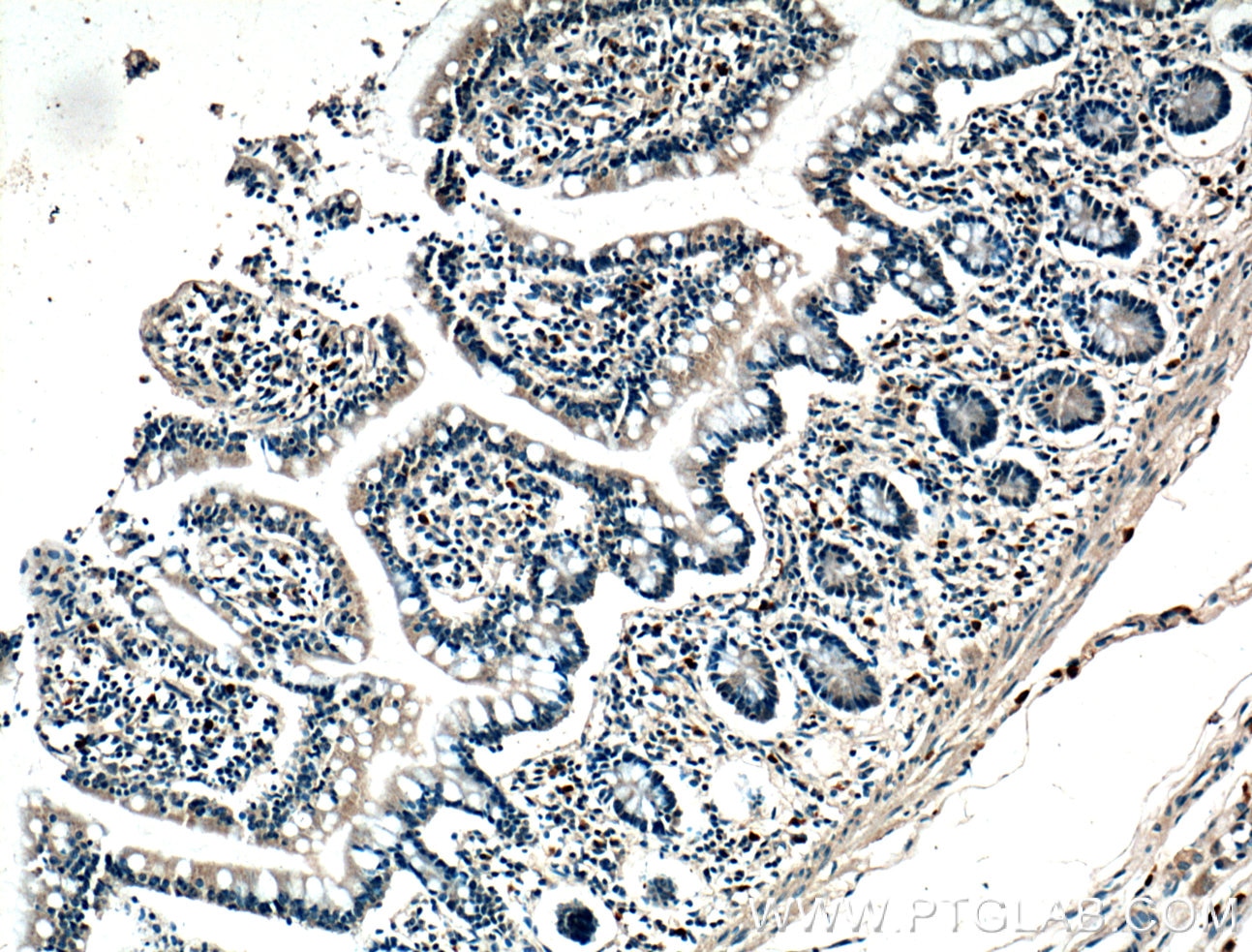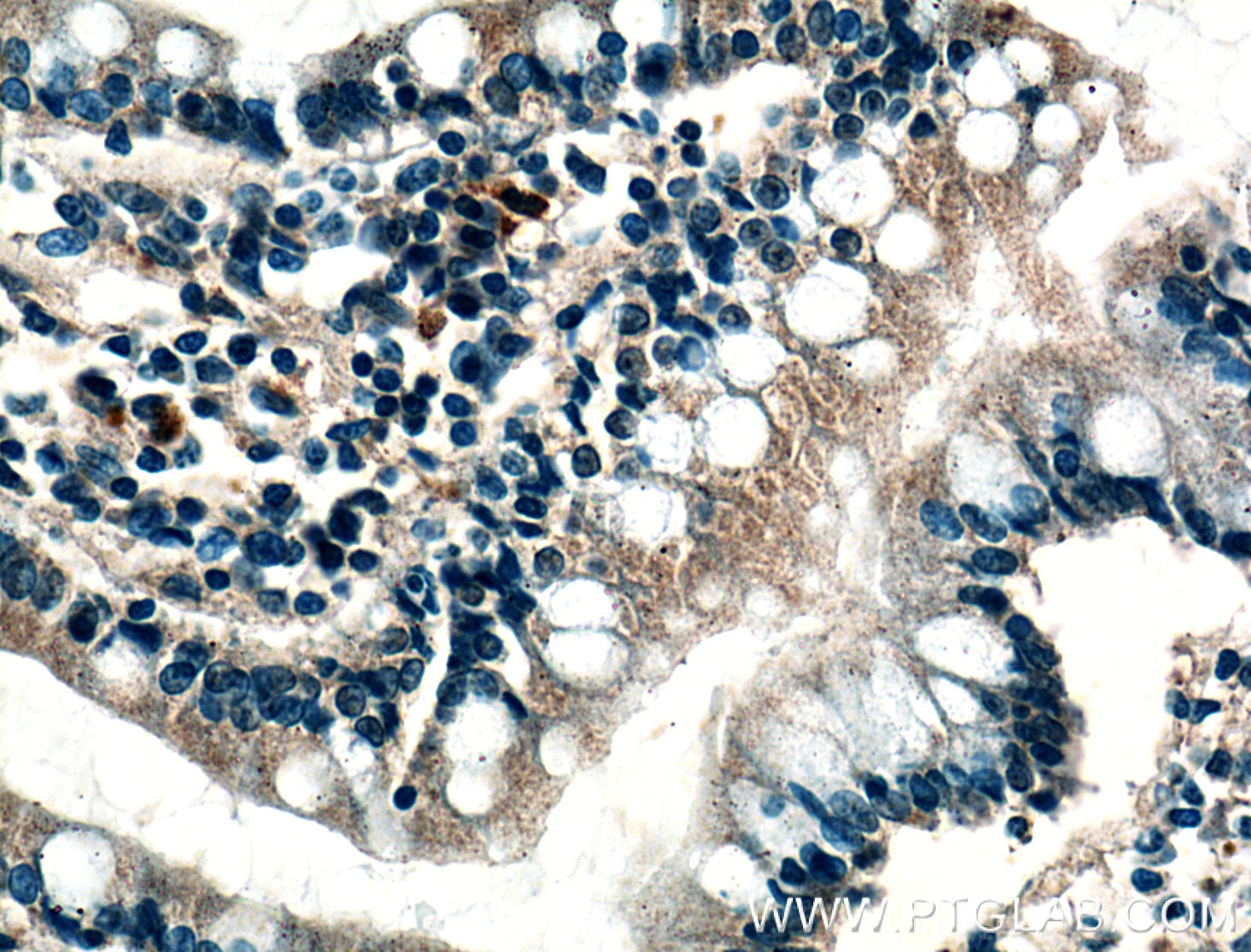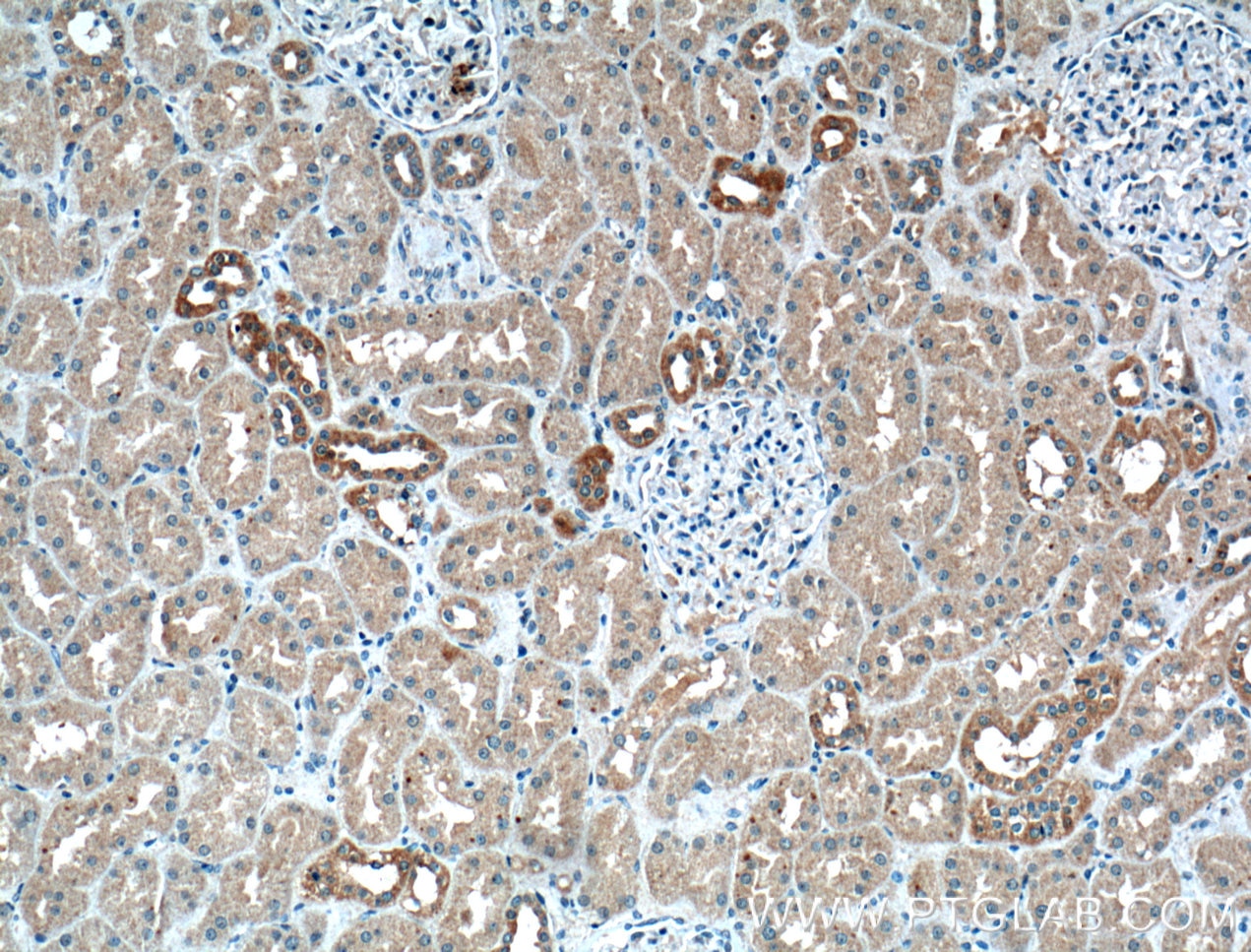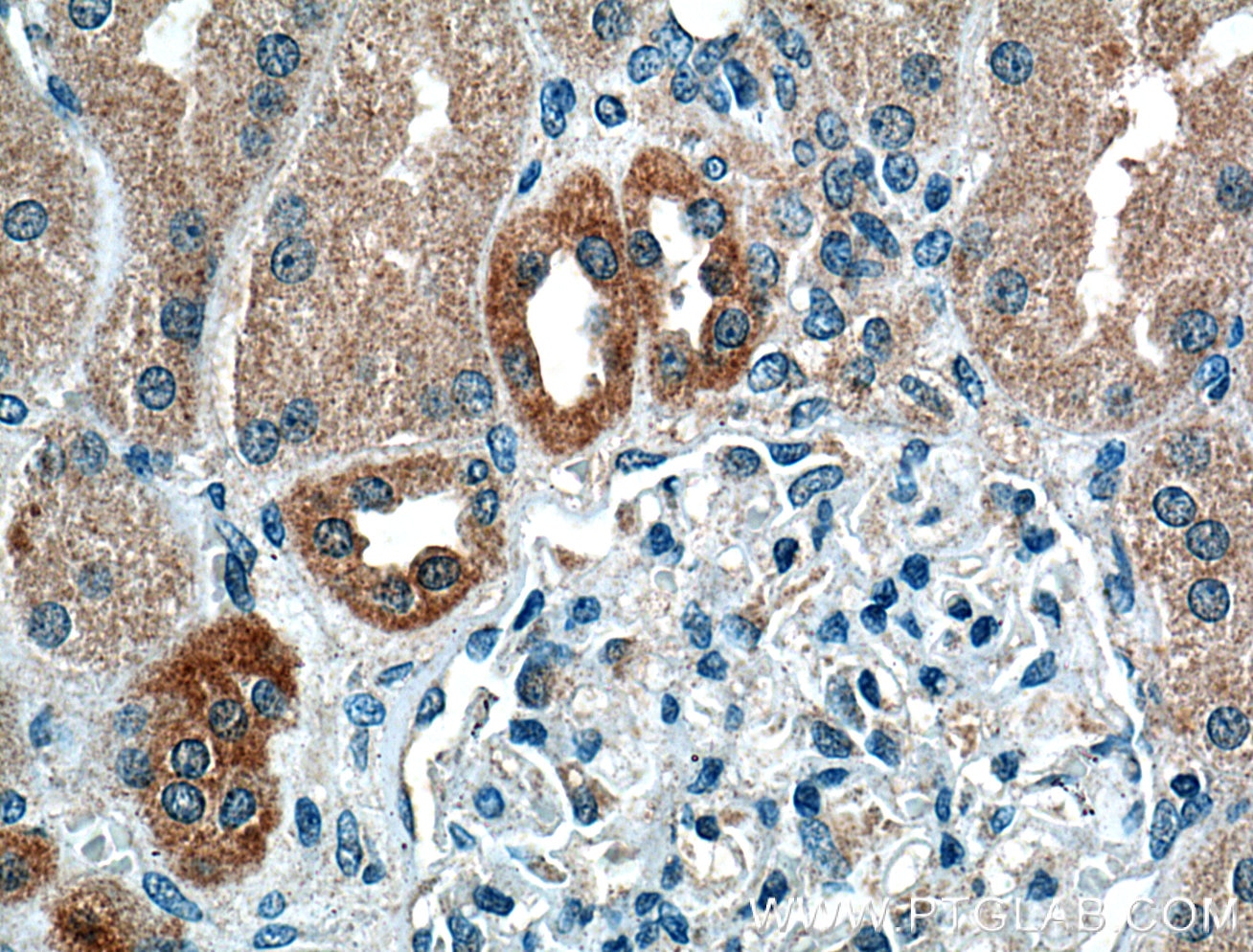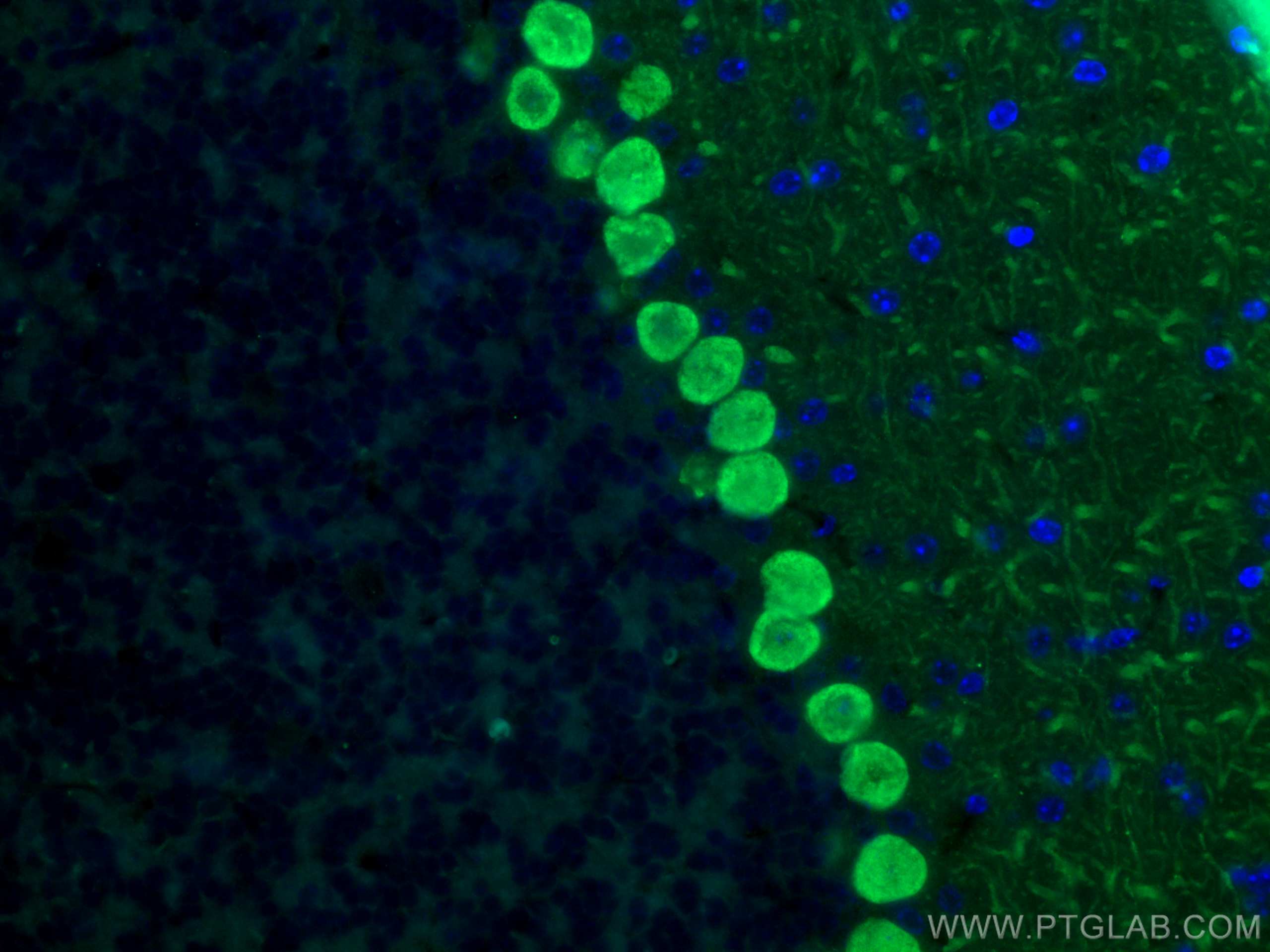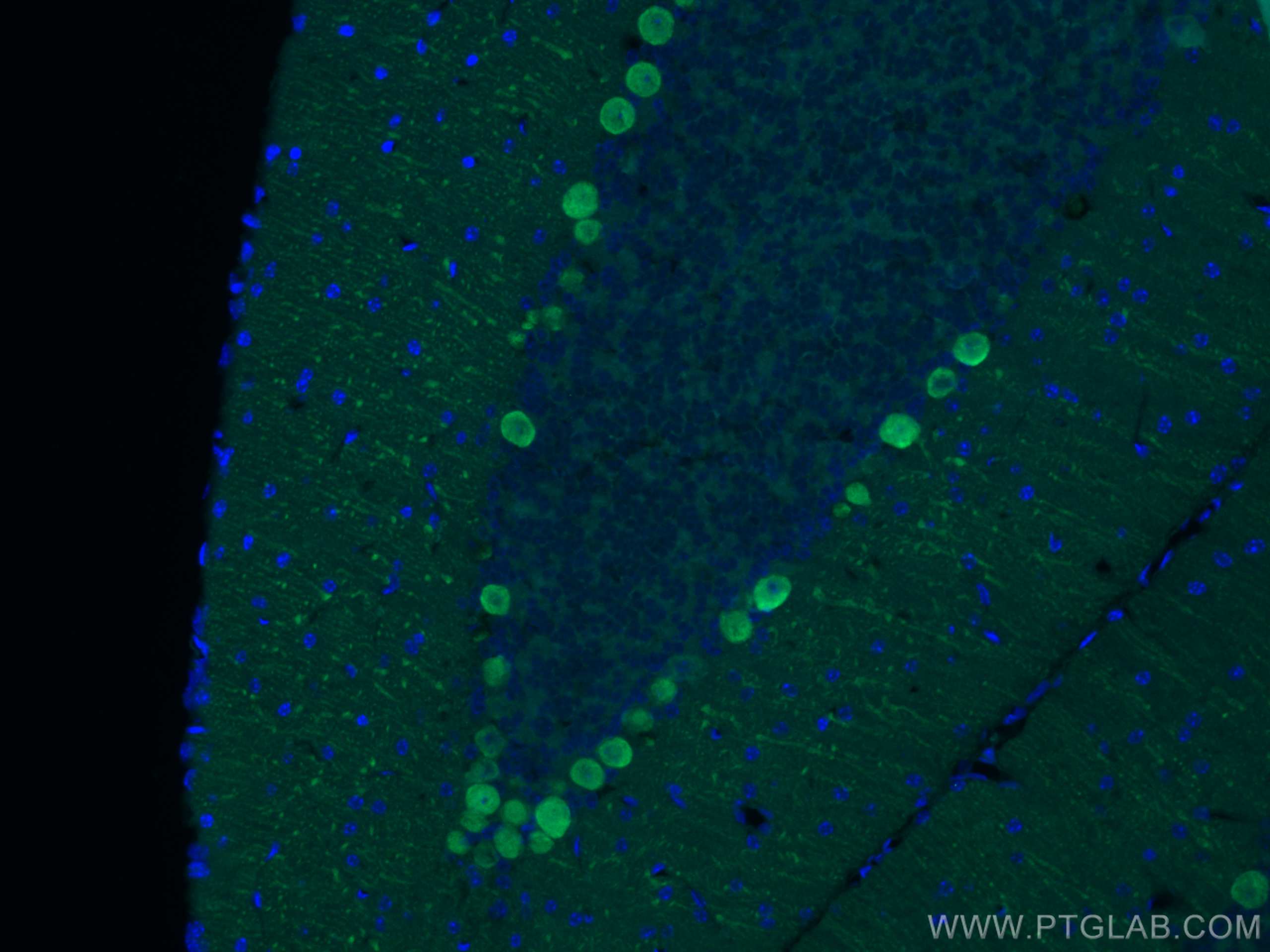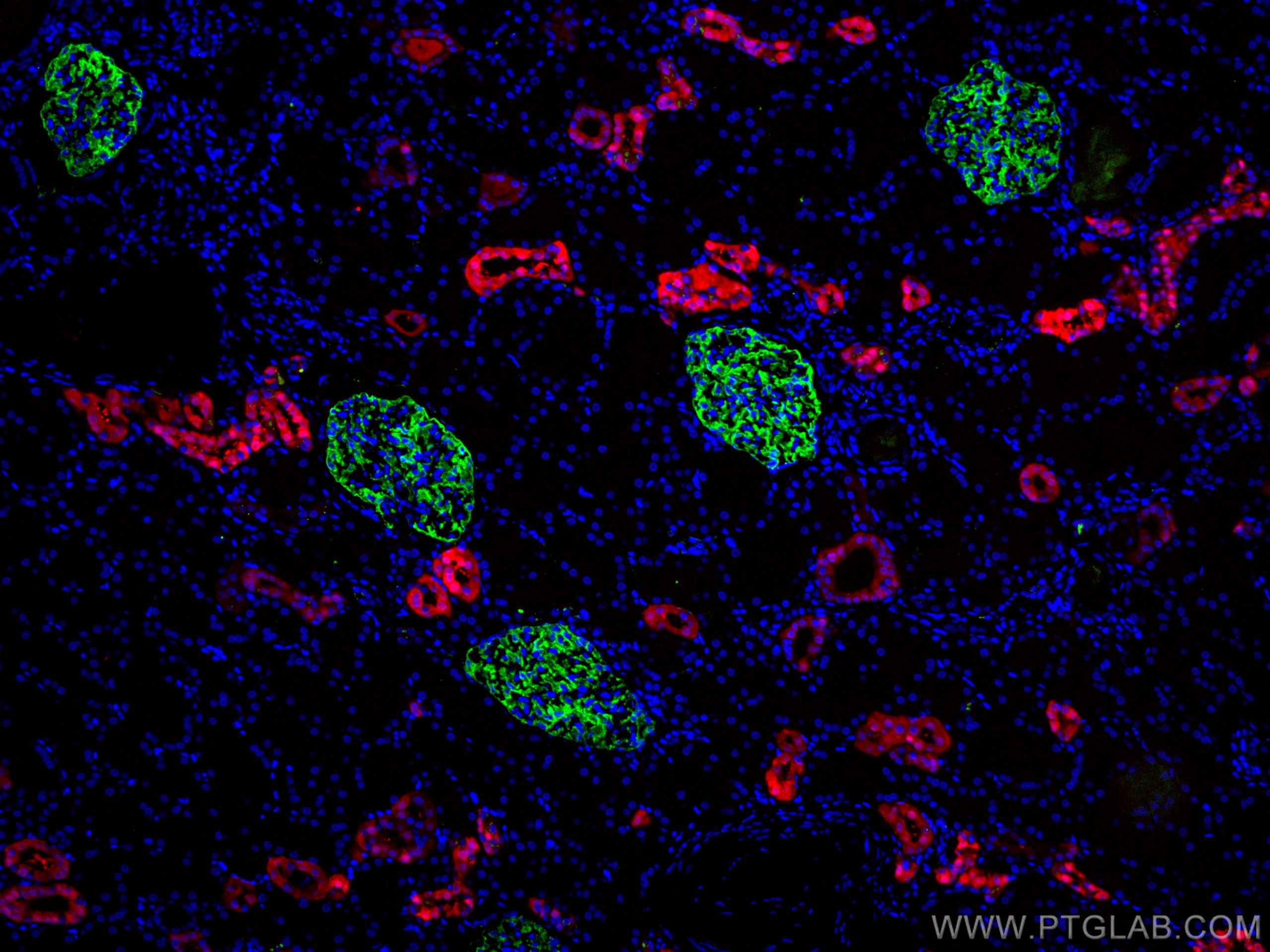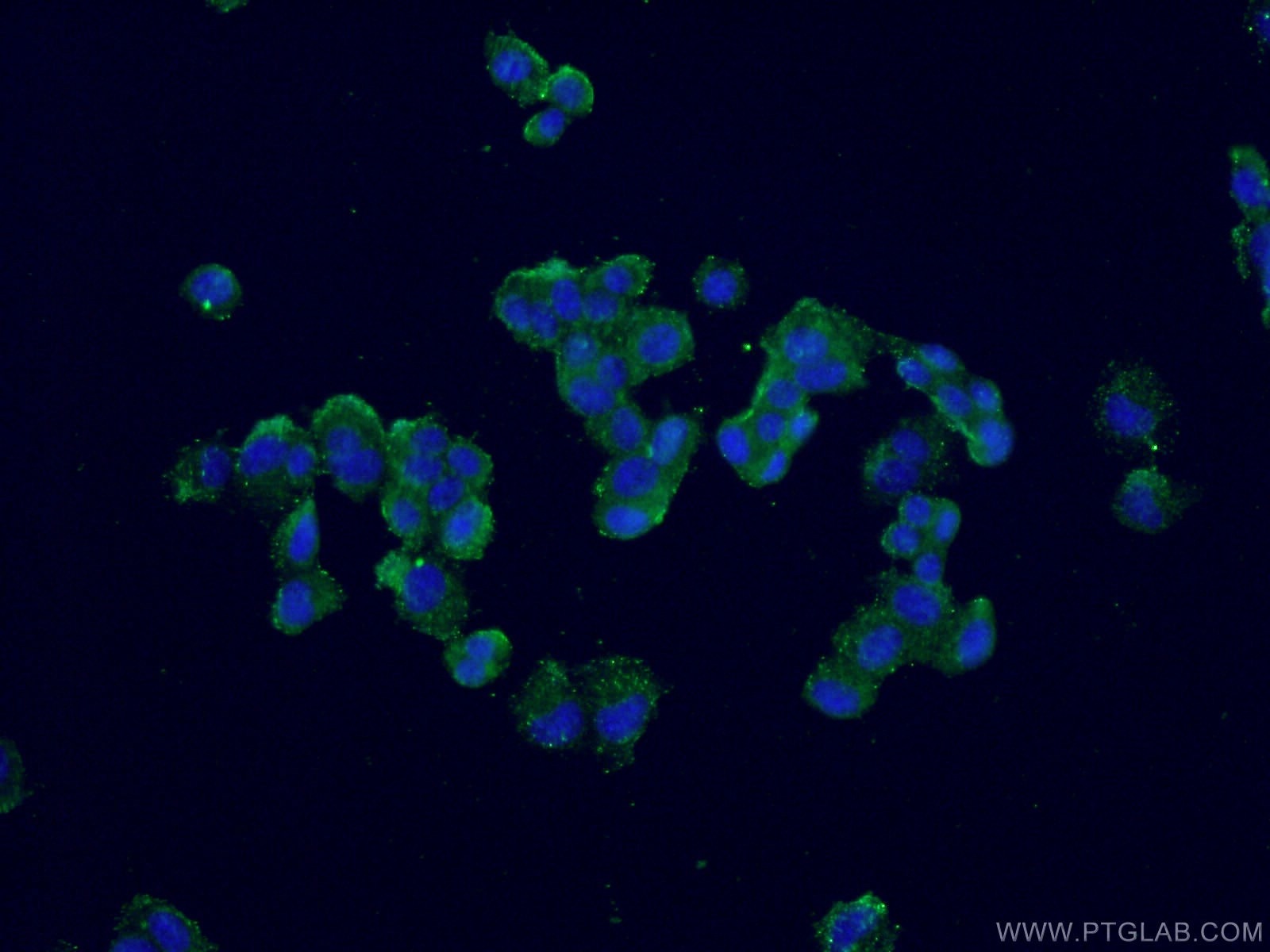Calbindin-D28k Monoklonaler Antikörper
Calbindin-D28k Monoklonal Antikörper für IF, IHC, WB, ELISA
Wirt / Isotyp
Maus / IgG1
Getestete Reaktivität
Hausschwein, Hausschwein, human, Kaninchen, Maus, Ratte
Anwendung
WB, IHC, IF, ELISA
Konjugation
Unkonjugiert
CloneNo.
1F8B9
Kat-Nr. : 66394-1-Ig
Synonyme
Galerie der Validierungsdaten
Geprüfte Anwendungen
| Erfolgreiche Detektion in WB | Kaninchenhirngewebe, fetales humanes Hirngewebe, Hausschwein-Cerebellum-Gewebe, Kaninchen-Cerebellum-Gewebe, Maus-Cerebellum-Gewebe, Maushirngewebe, PC-12-Zellen, Ratten-Cerebellum-Gewebe, Rattenhirngewebe |
| Erfolgreiche Detektion in IHC | Ratten-Cerebellum-Gewebe, humanes Dünndarmgewebe, humanes Hirngewebe, humanes Nierengewebe, Mausnierengewebe, Rattennierengewebe Hinweis: Antigendemaskierung mit TE-Puffer pH 9,0 empfohlen. (*) Wahlweise kann die Antigendemaskierung auch mit Citratpuffer pH 6,0 erfolgen. |
| Erfolgreiche Detektion in IF | Maus-Cerebellum-Gewebe, humanes Nierengewebe, PC-12-Zellen |
Empfohlene Verdünnung
| Anwendung | Verdünnung |
|---|---|
| Western Blot (WB) | WB : 1:5000-1:50000 |
| Immunhistochemie (IHC) | IHC : 1:8000-1:32000 |
| Immunfluoreszenz (IF) | IF : 1:50-1:500 |
| It is recommended that this reagent should be titrated in each testing system to obtain optimal results. | |
| Sample-dependent, check data in validation data gallery | |
Veröffentlichte Anwendungen
| IHC | See 1 publications below |
| IF | See 7 publications below |
Produktinformation
66394-1-Ig bindet in WB, IHC, IF, ELISA Calbindin-D28k und zeigt Reaktivität mit Hausschwein, Hausschwein, human, Kaninchen, Maus, Ratten
| Getestete Reaktivität | Hausschwein, Hausschwein, human, Kaninchen, Maus, Ratte |
| In Publikationen genannte Reaktivität | human, Maus, Ratte |
| Wirt / Isotyp | Maus / IgG1 |
| Klonalität | Monoklonal |
| Typ | Antikörper |
| Immunogen | Calbindin-D28k fusion protein Ag5861 |
| Vollständiger Name | calbindin 1, 28kDa |
| Berechnetes Molekulargewicht | 30 kDa |
| Beobachtetes Molekulargewicht | 28 kDa |
| GenBank-Zugangsnummer | BC006478 |
| Gene symbol | CALB1 |
| Gene ID (NCBI) | 793 |
| Konjugation | Unkonjugiert |
| Form | Liquid |
| Reinigungsmethode | Protein-A-Reinigung |
| Lagerungspuffer | PBS mit 0.02% Natriumazid und 50% Glycerin pH 7.3. |
| Lagerungsbedingungen | Bei -20°C lagern. Nach dem Versand ein Jahr lang stabil Aliquotieren ist bei -20oC Lagerung nicht notwendig. 20ul Größen enthalten 0,1% BSA. |
Hintergrundinformationen
Calbindin-D28k is a member of the calcium-binding protein superfamily that includes calmodulin and troponin C. It is a cytosolic calcium binding protein highly expressed in the distal tubule, intestines, central nervous system, primary murine osteoblast cells and in several other organs. It plays an important role in the intracellular calcium homeostasis, its strong buffering capacity prevents cytotoxic effect of high concentration of free calcium in kidney, brain, pancreas, and intestine.
Protokolle
| Produktspezifische Protokolle | |
|---|---|
| WB protocol for Calbindin-D28k antibody 66394-1-Ig | Protokoll herunterladen |
| IHC protocol for Calbindin-D28k antibody 66394-1-Ig | Protokoll herunterladen |
| IF protocol for Calbindin-D28k antibody 66394-1-Ig | Protokoll herunterladen |
| Standard-Protokolle | |
|---|---|
| Klicken Sie hier, um unsere Standardprotokolle anzuzeigen |
Publikationen
| Species | Application | Title |
|---|---|---|
Adv Sci (Weinh) Integrative Single-Cell Transcriptomics and Epigenomics Mapping of the Fetal Retina Developmental Dynamics | ||
Cell Death Differ The long noncoding RNA Synage regulates synapse stability and neuronal function in the cerebellum. | ||
iScience Mutational burden of XPNPEP3 leads to defects in mitochondrial complex I and cilia in NPHPL1 | ||
Int Immunopharmacol Clinical significance of Interleukin 17 receptor E in diabetic nephropathy | ||
Front Neurosci Rodent Area Prostriata Converges Multimodal Hierarchical Inputs and Projects to the Structures Important for Visuomotor Behaviors. | ||
Neurosci Lett Retinoic acid supplementation ameliorates motor incoordination via RARα-CBLN2 in the cerebellum of a prenatal valproic acid-exposed rat autism model |
